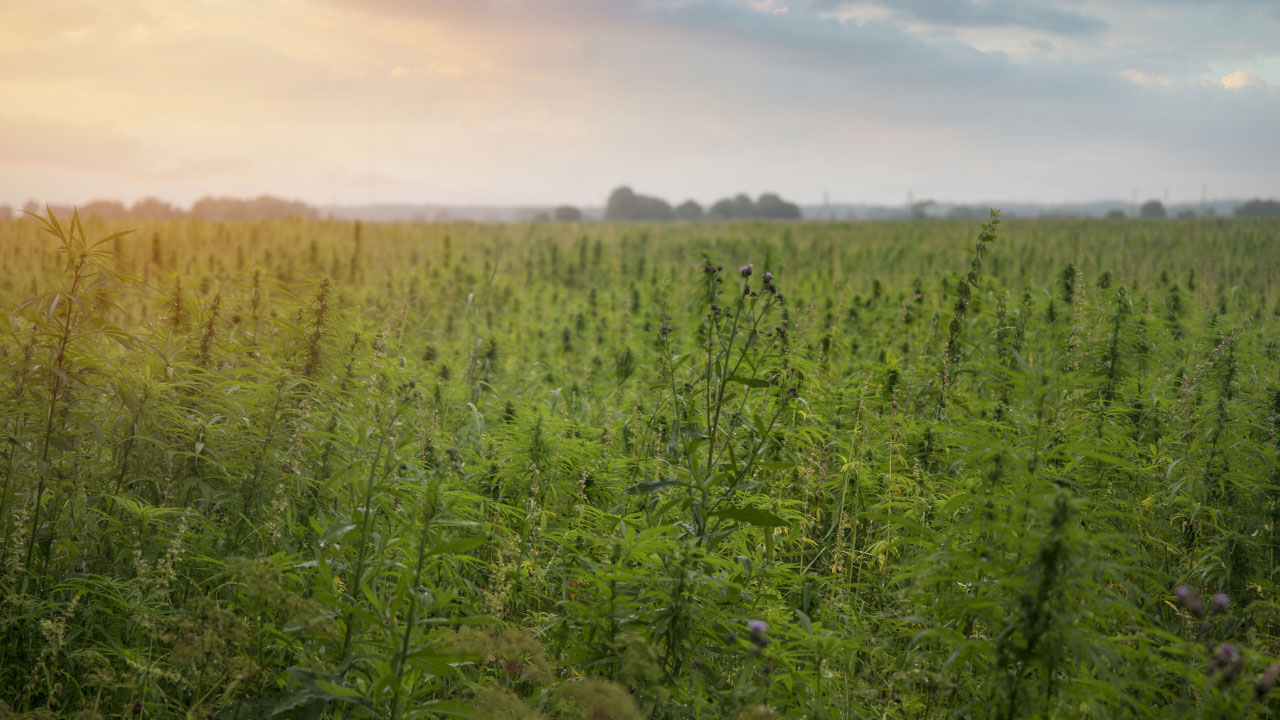The Benefits of Growing Hemp with Drip Irrigation
Sep 6th 2022
Drip irrigation is the most effective method to feed a hemp crop exactly what it needs, adequate water, and fertilizer. For even water distribution, long product life, and low maintenance, a drip system is best.
Hemp is a crop that can do well in many climates and soil types. It’s been traditionally grown outdoors in fields to be cultivated and harvested for textiles, paper, for health benefits, livestock feed, biofuels, and for structural (hempcrete) materials. Hemp’s deep tap roots can find water that is buried underground, but for a healthy and precious crop, it will be benefited with additional water via drip irrigation. In the arid climates of the western United States, where it doesn’t often rain, drip irrigation offers a practical solution that enables farmers and growers of all sizes to grow hemp profitably.
For large scale industrial or medicinal hemp production, Aqua-Traxx drip tape is the economically perfect tape for evenly delivering a uniform distribution of water over long distances in rows up to 550′ maximum outdoors or in a greenhouse or high tunnel situation. This product is extremely clog-resistant, but we recommend using a filter to eliminate any possibility of debris large enough to affect the performance of your drip system.
Emitter Tubing is 1/2″ pressure compensating tubing that delivers water evenly over long distances if you are irrigating long rows or hilly terrain. It is the most versatile product for more extensive plantings of hemp in rows or individual circling plantings of cannabis indica.
Hemp plants are hardy, finding a way to manage even when conditions and soils aren’t ideal. It grows more vigorously than corn but with fewer resources (water, pesticides, fertilizer). The sizeable fibrous root system of hemp will break up and aerate the soil over time, thus making dense clay-like soils easier to penetrate. And because hemp is a one stalk plant grown in dense tightly packed fields, weeds are less of a problem than with many other crops. These fields look more like a cornfield than an orchard, or licensed outdoor cannabis grow.
A lack of rain or water in the beginning stages of growth will significantly reduce the growth of the plant. Plant size also correlates directly to nitrogen and other micronutrients in the soil. Nitrogen and other nutrients can be fed while watering by installing a fertilizer injector at the beginning of a drip system. This is a much less labor-intensive way to fertilize than other more traditional methods. Powered entirely by the water flowing through it, the MixRite Injector is the best fertilizer injector for reliably delivering organic or synthetic fertilizers to a crop. They can fertilize large acreage and are simple to install, operate, and clean (see online video). Its four models come in mix ratios that vary from 1%, 2%, 4%, and 10%. The 10% unit is best for organic fertilizers as it takes a higher concentration of organic fertilizer to do an adequate job. Many people are trying to grow hemp (Cannabis sativa) in a sustainable and environmentally friendly way. Industrial hemp farmers know that the crop must be produced in well-fertilized soil for a good yield. To do this in a sustainable and environmentally friendly way, they should avoid the use of chemical fertilizers. One way to accomplish this is by planting nitrogen-fixing cover crops such as clover, rye, and alfalfa that can be grown and then disked in to enrich the soil for the following season. Hemp fields can also be covered with manure in the winter or spring for this purpose.
Comparing the water requirement of hemp to that of cotton (hemp uses 1/14th the amount of water as cotton and much less than almost every other commercial crop) makes growing hemp a possibility for farmers who have the acreage but not enough water to grow other plants.
Hemp also benefits crops grown after it. Winter crops like cereal grains are often grown in the same fields after the hemp crop is harvested to take advantage of soil loosening by the large hemp root system, high weed suppression because of the dense planting of hemp, and the positive effect on soil tilth. Hemp can be grown in the same field several years in a row when using the methods of enriching the soil mentioned above.
With the passage of the 2018 Farm Bill, the United States federal government has given the green light for farmers to begin cultivating hemp by removing it from the list of Schedule 1 Controlled Substances. After all, it’s been grown for thousands of years around the globe. Right now, China grows 75% of the world’s hemp, so the US has a lot of catching up to do. Growing hemp to produce CBD (anti-inflammatory, relaxation, and pain relief effects, to name a few) and other health products, growing hemp on a smaller scale in a greenhouse offers another way to jump in on the hemp cultivating bandwagon. Here too, drip irrigation can provide the basics of what a hemp crop needs water and fertilizer.
Hemp is as near an ideal crop as there is. It requires limited resources and labor, requires regular but limited amounts of water, and is resistant to many of the diseases and pests limiting crop diseases and the use of pesticides and herbicides. It’s a vigorous grower with a lot of potential for today’s farmers seeking to replace crops that are expensive to grow and getting harder to sell at a profit. We can help you to achieve success at dripworks.com.

